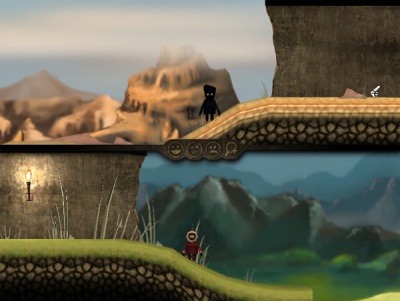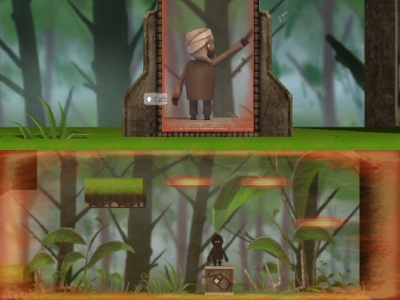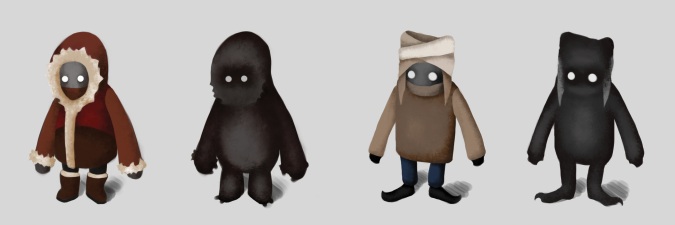
WAY
|
||||||
|
Praise For WAY
Download Game
(requires 2 players and 2 computers)
Development Blog
"Way" invites strangers from around the world to collaborate in creating a shared gestural language online. Each player is paired with another random individual. By puppeteering their avatars (freely controlling limbs and head to wave, point, nod, and more), these anonymous players must learn to communicate with each other to solve puzzles -- all without using text or speech.
Played in split-screen, one player journeys from left to right, and the other from right to left, striving to meet in the middle. As in life, each person has a unique perspective of the world -- each player sees things that the other cannot -- and so each must gesture to communicate what only he or she can see. Over the course of their adventure, players confront new types of puzzles that challenge them to communicate new ideas, such as position, timing, and motion. My role in the project was as programmer and co-designer. As one of the two programmers on the project, I implemented many of the major systems, including character movement, puppeteering controls, camera tracking, multiplayer networking, and the designer-friendly trigger/event system used to create the actual puzzle logic. One of the most challenging systems to implement was the puppeteering controls because any user control of the arms or head had to override but still blend in-and-out with the regular character animations. The other big challenge was programming character movement, puppeteering, and triggers to work smoothly between two networked computers As co-designer, I helped develop the game from initial concept ("let's make a game about communicating without text or speech") to final product. At a high level, I contributed to the early ideation & brainstorming and then, once we had our direction finalized, to the overall flow, pacing, and ordering of the game. At a lower level, I worked with the other designers to create, test, and refine the individual puzzles, to improve the handling of the players' characters, and to teach to the players the unique mechanics of the game.
Teaching players the mechanics was the most challenging aspect of creating "Way", including both the unusual rules of the game (some objects are visible to only one player) and the game's controls (mouse interface to control the character's head and limbs). Because we couldn't use text or speech in the game, we couldn't simply explain the mechanics, but instead had to figure out how to show them. To teach the invisibility rules, we devised "magical windows" that let the players see into the other's world in (literally) a new light. And to teach the puppeteering controls, we created a series of "pose walls" where players had to match the pose drawn on the wall to open a door. "Way" was developed as a semester-long project at the Entertainment Technology Center. In the press:
Credits: myself (programming & design), Chris Bell (design), Cynthia Jiang (programming), Katherine Rubenstein (art & design), Hugo Shih (art), Paulwei Wang (producer). Additional Thanks: Doug Fischer & Jam Chiang (music & sound), Jiyoung Lee & Carl Rosendahl (project advisors)
|






